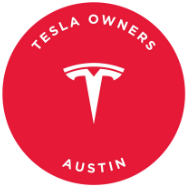Tesla’s branding of its advanced driver-assistance system as Full Self-Driving has caused quite a stir in the automotive industry. The name has sparked lawsuits, federal investigations, and a significant perception problem for the company. Perhaps if Tesla had chosen a more grounded and accurate name, like Tesla Highway Assist or Tesla Cruise, it could have avoided many of these issues.
While Tesla’s system has improved over time, it still falls short of the expectations set by the Full Self-Driving label. The term implies full autonomy, which is more in line with the company’s aspirations for its Robotaxi fleet than with the everyday passenger cars that consumers are currently driving. Despite this, a recent test in China has shown that Tesla’s advanced driver assistance systems (ADAS) are outperforming those of its Chinese competitors.
In the test conducted by ByteDance’s Dcar platform and China’s state media CCTV, Tesla’s vision-based system outperformed the lidar-equipped systems of Chinese automakers like BYD, Xiaomi, Xpeng, and Huawei in five out of six real-world driving scenarios. These scenarios included sudden cut-ins, construction zones, aggressive merging, and even a wild boar charging across the highway. The only test that Tesla did not pass involved the wild boar encounter and the construction zone.
Tesla CEO Elon Musk attributed the company’s success in the test to its use of training data from its world simulator and test tracks, despite not having access to local training data due to Chinese laws against data export. Musk also noted that the test was focused on ADAS capabilities and not full autonomy, as the drivers were still required to supervise the system with their hands on the steering wheel.
It’s important to recognize that this test did not cover all driving conditions, such as adverse weather, where lidar technology could play a more critical role. Nevertheless, Tesla’s performance in the test showcases the continued advancements in its ADAS technology and its ability to compete with established players in the industry. As Tesla continues to refine its systems and expand its capabilities, it will be interesting to see how it stacks up against the competition in future tests. automakers, including GM, Ford and Stellantis, have warned that the expiration of the federal electric vehicle tax credit at the end of September could result in a significant drop in EV sales. The credit provides up to $7,500 for the purchase of an electric vehicle.
LGES is not the only company feeling the impact of reduced battery demand. Other battery manufacturers, like Panasonic and SK Innovation, are also monitoring the situation closely.
The potential decline in battery demand could have far-reaching effects on the electric vehicle industry, as batteries are a crucial component of EVs. Without enough demand for batteries, automakers may struggle to meet their production targets and expand their electric vehicle offerings.
100%: The Electric Vehicle Industry Faces Uncertainty
The challenges faced by Volkswagen and LG Energy Solution are just a snapshot of the broader challenges facing the electric vehicle industry. The industry is at a critical juncture, with various factors, including government policies, supply chain disruptions, and consumer demand, impacting its growth and development.
As governments around the world set ambitious targets for reducing carbon emissions and transitioning to electric vehicles, the stakes are high for automakers and battery manufacturers. The industry must navigate these challenges while also innovating and investing in new technologies to stay competitive in the rapidly evolving market.
While the electric vehicle industry has seen tremendous growth in recent years, there are still many uncertainties and obstacles that must be overcome. Companies must adapt to changing market conditions and regulatory environments to succeed in the long term.
Despite the challenges, there is also great opportunity for growth and innovation in the electric vehicle industry. Companies that can successfully navigate the current challenges and capitalize on emerging trends will be well-positioned to lead the industry into the future.
Overall, the full video released by Dcar Studio provides valuable insights into the current state of the electric vehicle industry and the challenges it faces. It is a must-watch for anyone interested in the future of transportation and sustainable mobility.
With the potential end of EV subsidies and the implementation of tariffs, automakers like LGES are facing a challenging road ahead. The CFO’s warning about the burden on automakers is not unwarranted, as these policy changes could indeed lead to price increases for vehicles, especially electric ones. This, in turn, may slow down the growth of the EV market in North America, affecting companies like LGES and Tesla.
Despite this challenging environment, LGES is looking to offset the sluggish EV demand by focusing on the production of batteries for energy storage systems (ESS). The company’s decision to produce lithium-iron phosphate (LFP) batteries for ESS in the U.S. is a strategic move to tap into the growing demand for energy storage solutions, especially in sectors like AI data centers.
On the other hand, Tesla’s energy business is thriving, providing a silver lining amid falling car sales. The demand for energy storage solutions is on the rise, and companies like LGES and Tesla are well-positioned to capitalize on this trend. As the need for battery storage grows, these companies can leverage their expertise to meet the market demand and potentially offset any losses from a slowdown in EV sales.
It will be interesting to see how automakers navigate these challenges in the coming months. The future of the EV market in North America hinges on various factors, including government policies, consumer demand, and technological advancements. Companies like LGES and Tesla will need to adapt and innovate to stay competitive in this rapidly evolving landscape.

